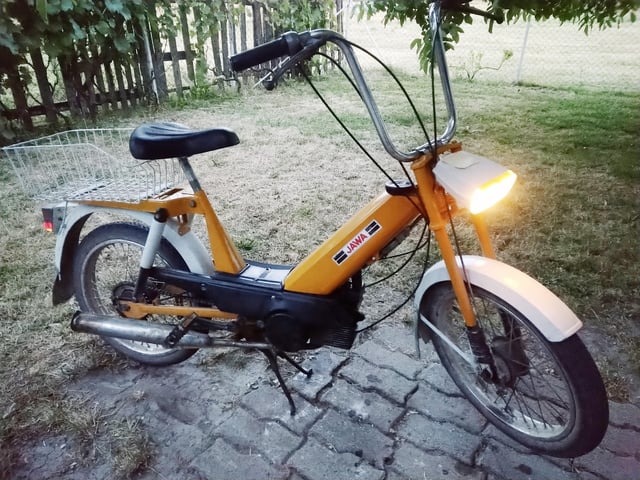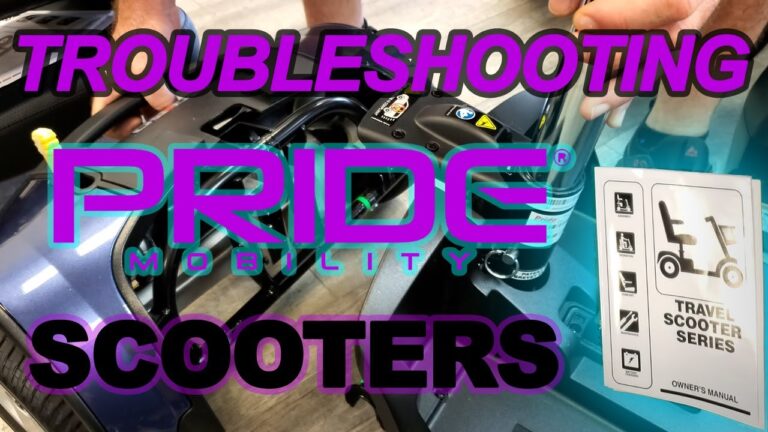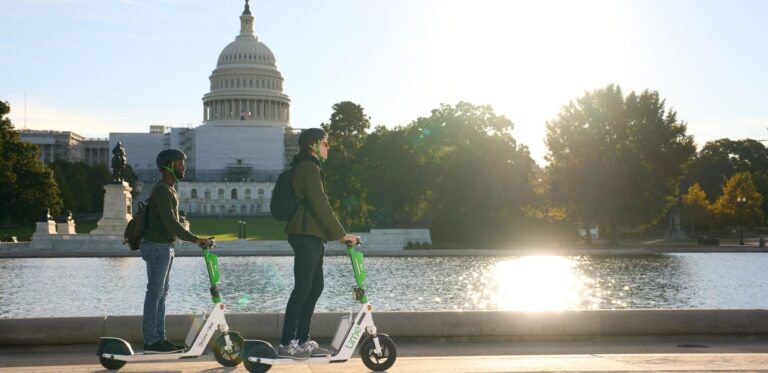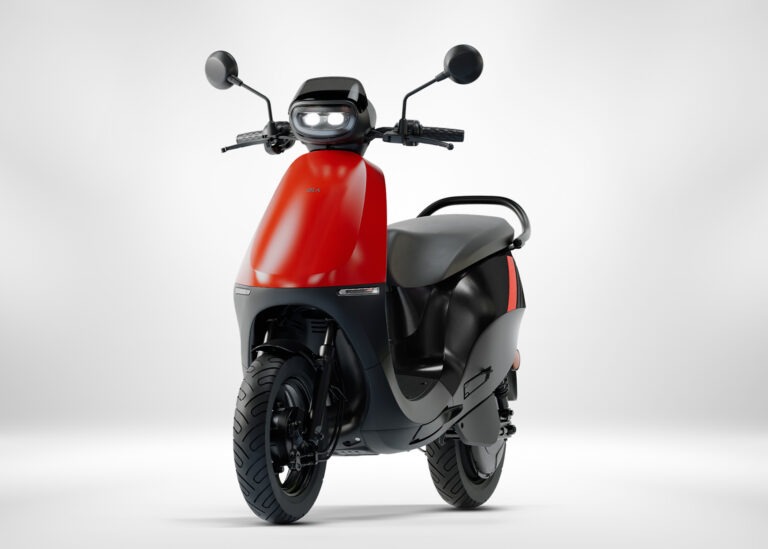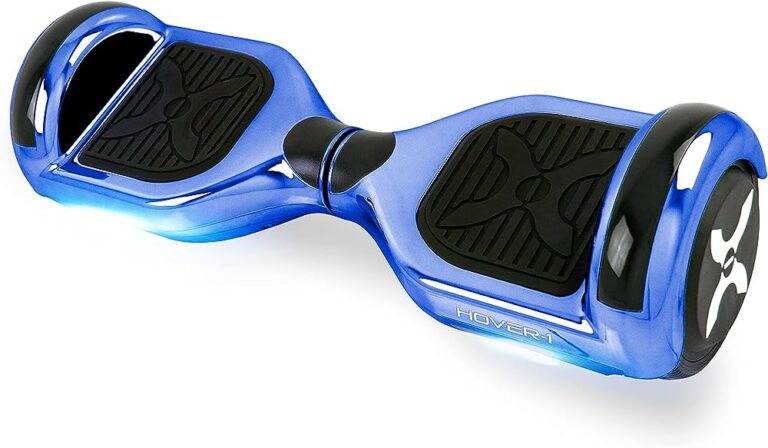Where Can You Not Use a Mobility Scooter: Forbidden Terrains
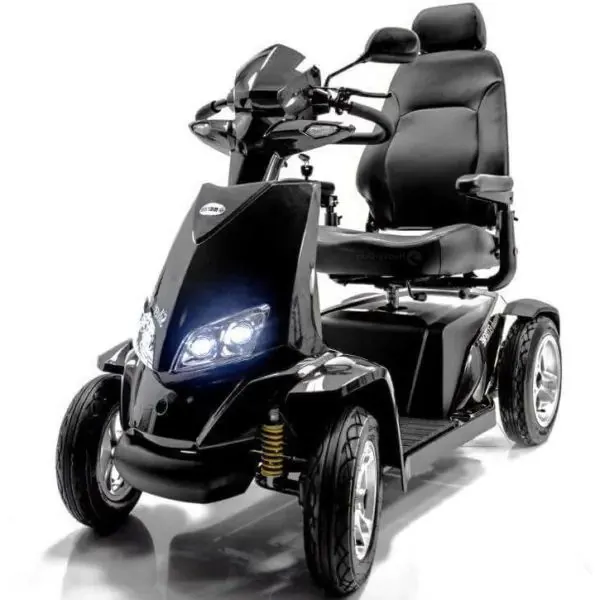
You cannot use a mobility scooter on stairs and escalators. Mobility scooters are not suitable for use in settings with uneven terrain, narrow doorways, or crowded spaces, such as swimming pools, certain shopping aisles, and narrow hallways in homes.
However, they can be used on roads, pavements, and wide-open spaces such as parks and gardens. Mobility scooters are designed to provide independence and convenience for individuals with limited mobility, but it is important to be aware of their limitations and use them appropriately within safe environments.
Forbidden Terrains For Mobility Scooters
Mobility scooters cannot be used in certain terrains, restricting their access to places like sandy beaches, steep slopes, and narrow stairways. Use caution to ensure safe and suitable scooter use.
Mobility scooters are an excellent way for individuals with limited mobility to regain their independence and navigate various environments. However, it’s important to be aware that there are certain landscapes and surfaces where mobility scooters are not intended to be used.
Let’s explore these forbidden terrains to ensure the safety of scooter users:
Different Landscapes And Surfaces Where Mobility Scooters Are Prohibited
- Uneven Terrain: Mobility scooters are not designed for rugged or uneven terrains such as hiking trails or rocky paths. These surfaces can pose a risk of tipping over or getting stuck. Stick to smooth and even pathways to ensure a secure ride.
- Steep Inclines: Although some mobility scooters can handle slight inclines, it’s safer to avoid steep slopes. Inclines that exceed the scooter’s capabilities may affect stability and put the user at risk of accidents.
- Sandy Beaches: Mobility scooters can struggle to navigate through sand due to its soft and shifting nature. It’s best to avoid taking your scooter onto sandy beaches to prevent it from getting stuck or damaging the components.
- Wet Surfaces: Mobility scooters are not equipped with proper traction for wet surfaces like puddles or grass after rain. These conditions can make it difficult to maintain stability, leading to potential accidents. Be cautious and avoid such areas when it’s wet.
- Stairs and Escalators: Mobility scooters are not designed to climb stairs or use escalators. Attempting to do so can not only damage the scooter but also endanger the user. Always look for alternative accessible routes when encountering stairs or escalators.
- Crowded Pedestrian Areas: While mobility scooters are ideal for outdoor use, navigating through crowded pedestrian areas can be challenging. Maneuvering in tight spaces or busy streets can pose a risk to both the user and pedestrians. It’s advisable to choose less crowded routes whenever possible.
- Roadways and Highways: Mobility scooters are not intended for use on roadways or highways. Unlike vehicles, they lack the necessary speed and visibility required for road travel. Using a scooter on these thoroughfares can be extremely dangerous.
- Extreme Weather Conditions: Extreme weather conditions such as heavy rain or snowstorms can make it difficult to operate a mobility scooter safely. Slippery surfaces and limited visibility can increase the risk of accidents. It’s recommended to stay indoors during severe weather events.
- High-Traffic Areas: Avoid using mobility scooters in areas with high traffic volumes, such as busy intersections or congested streets. The limited speed and size of mobility scooters may make it challenging for other drivers to notice or react in time.
- Private Property without Permission: It’s important to respect private property and seek permission before using a mobility scooter on someone else’s premises. Trespassing on private property can lead to legal consequences and strain relationships.
Remember, while mobility scooters enhance mobility and independence, it’s essential to use them in appropriate environments. Understanding where mobility scooters are prohibited ensures your safety and the longevity of the scooter itself. Stay informed, be proactive, and enjoy your mobility scooter on suitable terrains.
Urban Areas: Limited Mobility Access
Urban areas present challenges for mobility scooter users as there are certain places where these scooters cannot be used. Places like staircases, escalators, and narrow walkways are off-limits for mobility scooters due to limited accessibility.
Urban areas can present unique challenges for individuals using mobility scooters. Navigating through narrow sidewalks, dealing with unpredictable pedestrian traffic, and encountering obstacles like curbs, steps, and rough terrain can make mobility access limited in crowded urban areas. Additionally, finding suitable parking spots and maneuvering through busy streets can be a struggle.
Let’s explore these challenges in more detail:
Challenges Of Using Mobility Scooters In Crowded Urban Areas:
- Narrow sidewalks and unpredictable pedestrian traffic:
- Sidewalks in urban areas are often too narrow to accommodate mobility scooters comfortably.
- Pedestrian traffic can be unpredictable, with people walking quickly, stopping abruptly, or stepping out unexpectedly from shops or restaurants.
- Obstacles like curbs, steps, and rough terrain:
- Curbs can be challenging to navigate for mobility scooter users, especially if they lack curb cuts or ramps.
- Steps on sidewalks and uneven surfaces can make it difficult to smoothly maneuver a mobility scooter.
- Rough terrain, such as potholes or gravel, can cause discomfort and potential hazards for scooter users.
- Struggles with parking and navigating through busy streets:
- Finding suitable parking spaces for mobility scooters can be a challenge in crowded urban areas.
- Limited or inaccessible parking spaces may require scooter users to travel longer distances to reach their desired destinations.
- Navigating through busy streets filled with vehicles, pedestrians, and cyclists can be overwhelming and unsafe for scooter users.
In these urban areas, mobility scooter users may encounter restricted accessibility due to narrow sidewalks, unpredictable pedestrian traffic, obstacles like curbs and steps, and struggles with parking and maneuvering through busy streets. It’s important to consider these challenges and plan accordingly to ensure safe and efficient mobility access in urban environments.
Natural Environments: Unfriendly Territory
Navigating natural environments can be challenging when using a mobility scooter. Steep hills, rough terrain, and narrow pathways are unfriendly territory for these devices.
Instances Where Mobility Scooters Are Unsuitable For Natural Terrains
Navigating natural environments can pose challenges for mobility scooter users. While these devices provide increased accessibility and freedom, certain natural terrains require caution and may not be suitable for their use. Here are some situations where mobility scooters are not recommended:
- Rough trails, dirt paths, and uneven ground: Mobility scooters have limited ground clearance and are designed for smooth and even surfaces.
- Steep inclines, hills, and rocky surfaces: Mobility scooters may struggle to navigate steep inclines or rocky terrains due to their lower power compared to all-terrain vehicles. These terrains can pose a safety risk for both the user and the equipment.
- Limited accessibility in forests, parks, and wilderness areas: Natural areas often have narrow paths, fallen branches, and uneven ground, which can make it challenging for mobility scooters to pass through. In addition, thick foliage and overgrown vegetation can hinder visibility and maneuverability, increasing the risk of accidents.
When it comes to using mobility scooters in natural terrains, it is important to consider the capabilities and limitations of the equipment. While mobility scooters enhance everyday life for many individuals, it is crucial to choose appropriate environments where they can be safely utilized.
If you’re planning an outdoor adventure, it’s advisable to explore alternative mobility options specifically designed for off-road adventures, such as all-terrain mobility scooters or power wheelchairs.
Remember, safety should always be a priority, and making informed decisions about where to use mobility scooters will ensure a smooth and enjoyable experience in natural environments.
Public Transportation: Mobility Restrictions
Public transportation can sometimes have limitations on where mobility scooters can be used, ensuring safety and convenience for all passengers. It’s important to be aware of these restrictions to ensure a smooth and accessible experience for everyone.
Mobility Scooter Restrictions When Using Public Transportation
Using a mobility scooter can provide individuals with freedom and independence in their daily lives. However, there are certain limitations and restrictions when it comes to using these scooters on public transportation. Whether it’s buses, trains, or trams, there are various challenges that users may encounter.
Let’s take a closer look at the mobility scooter restrictions when using public transportation:
Limitations On Buses, Trains, And Trams Due To Size And Weight:
- Some buses, trains, and trams have limited space to accommodate mobility scooters, making it difficult for users to bring them onboard.
- Mobility scooters can be quite heavy, exceeding weight limits set by public transportation providers.
- Size restrictions may also come into play, especially when it comes to narrow aisles or doorways on buses, trains, or trams.
Challenges With Boarding And Securing Mobility Scooters:
- Boarding a bus or train with a mobility scooter can be a daunting task, as it may require assistance due to steps or high platforms.
- Users can encounter difficulties securing their scooters in designated areas. Lack of proper securing mechanisms may pose safety concerns during transit.
Restrictions For Storage And Availability Of Ramps Or Lifts:
- Public transportation vehicles are not always equipped with ramps or lifts to assist mobility scooter users in boarding.
- In some cases, ramps or lifts might be available, but they may not be functional or easily accessible, causing inconvenience and hindrance.
Public transportation presents challenges for mobility scooter users due to limitations on size, weight, boarding, securing, as well as the availability and functionality of ramps or lifts. It’s crucial for individuals relying on mobility scooters to plan their journeys accordingly, considering alternative modes of transportation or seeking assistance when necessary.
Shopping Centers: Confined Spaces
Shopping centers can be cramped spaces that pose challenges for mobility scooter users. Certain areas like escalators, stairs, and narrow passages make it impossible to use a mobility scooter, limiting their accessibility in such environments.
Issues Faced By Mobility Scooter Users In Shopping Centers:
- Narrow store aisles and crowded spaces:
- Mobility scooter users often encounter difficulties navigating through narrow store aisles due to limited space.
- Crowded areas can further impede their movement, leading to potential inconvenience and discomfort.
- Difficulty maneuvering in crowded checkout areas:
- The checkout areas of shopping centers tend to get congested during peak hours, making it challenging for mobility scooter users to navigate through the crowd.
- Maneuvering through tight spaces while others are waiting in line can be daunting and may lead to delays and frustration.
- Limitations in elevators and escalators for accessibility:
- While elevators and escalators are designed to provide accessibility, they may not always be suitable for mobility scooter users.
- Elevators may be too small to accommodate their scooters comfortably, and escalators present safety concerns.
- These limitations can restrict mobility scooter users from accessing different levels of the shopping center easily.
Shopping centers can present various challenges for mobility scooter users. Narrow store aisles, crowded checkout areas, and limited accessibility in elevators and escalators can make navigation difficult and potentially restrict their shopping experience. Awareness and accommodation within shopping centers can play a significant role in ensuring a more inclusive and comfortable environment for mobility scooter users.
Events And Venues: Specific Limitations
Mobility scooters are not permitted in certain areas of events and venues due to specific limitations. These restrictions ensure safety and accessibility for all attendees. Knowing where you cannot use a mobility scooter will help you plan accordingly and avoid any inconveniences at these locations.
Restrictions For Mobility Scooters In Certain Events And Venues
Planning to attend your favorite concerts, stadiums, or theaters? While mobility scooters offer great convenience for individuals with limited mobility, there are certain limitations to using them in certain events and venues. Here’s what you need to know:
- Concerts, stadiums, and theaters with limited seating options:
- Some venues may have limited seating options that are not suitable for mobility scooters. These limitations are often in place to ensure the safety and comfort of all attendees.
- Certain venues may only have designated areas for wheelchair seating, which might not be compatible with mobility scooters.
- It’s important to check with the event organizers or venue management beforehand to understand their accessibility policies and any specific restrictions for mobility scooters.
- Challenges with navigating through crowded event spaces:
- Large events often come with crowded spaces, narrow aisles, and dense crowds, making it difficult to maneuver a mobility scooter.
- Crowded areas can pose safety risks, both for the scooter user and those around them.
- The lack of space may also hinder your ability to enjoy the event or access facilities such as restrooms or concessions.
- Access limitations in historical sites and museum exhibitions:
- Historical sites and museum exhibitions often have architectural constraints that limit accessibility for mobility scooters.
- Narrow doorways, staircases, and uneven terrain can make it challenging or even impossible to explore these places on a mobility scooter.
- Some exhibits may not be designed to accommodate mobility scooters, restricting your ability to fully experience the displays.
Remember to always check with event organizers or venue management in advance to ensure that your mobility scooter is allowed and that appropriate accommodations can be made. By planning ahead and understanding the limitations, you can ensure a smooth and enjoyable experience at your desired events and venues.
Schools And Institutions: Safety Concerns
Safety concerns for mobility scooter users extend to schools and institutions, where certain areas may be off-limits. Navigating stairs, escalators, and narrow corridors may not be possible, creating limitations on where a mobility scooter can be used.
Guidelines For Mobility Scooter Usage In Educational Institutions:
- Educational institutions should establish clear guidelines regarding the usage of mobility scooters on their premises to ensure the safety of students, staff, and visitors.
- These guidelines should be communicated effectively to all members of the institution, including students, teachers, support staff, and parents.
- It is essential to educate scooter users about the proper operation of their scooters and the rules they need to follow.
Safety Concerns For Students And Staff In Crowded Hallways:
- Crowded hallways pose a significant safety risk for mobility scooter users as well as other students and staff members.
- Scooter users should be cautious and drive at a reasonable speed while maneuvering through crowded hallways to prevent accidents and collisions.
- It is important for other students and staff members to be aware and respectful of mobility scooter users, giving them sufficient space to pass.
Restrictions In Classrooms And Specialized Areas:
- Mobility scooters may not always be suitable for use inside classrooms or specialized areas that have limited space.
- Classrooms and areas with equipment or specific layouts might pose challenges for scooter users, hindering their maneuverability and potentially causing damage.
- Institutions should establish restrictions on scooter usage in such areas to ensure the safety of everyone and prevent any disruption.
Protocols For Emergency Evacuations And Alarms:
- It is crucial for educational institutions to have protocols in place to handle emergency evacuations involving mobility scooter users.
- Staff should be trained on how to assist scooter users during emergencies and lead them to safe assembly points.
- Emergency alarms and evacuation plans should consider the specific needs of mobility scooter users, ensuring their safety and smooth evacuation.
Remember, safety should always be the top priority in educational institutions when it comes to mobility scooter usage. By establishing guidelines, addressing safety concerns in crowded hallways, imposing restrictions in certain areas, and implementing protocols for emergencies, educational institutions can ensure a safe environment for all students, staff, and visitors.
Restricted Areas: Critical Zones
Restricted Areas: Critical Zones are designated locations where the use of mobility scooters is not permitted. These areas ensure safety for both scooter users and others by preventing potential accidents and damage. It is important to be aware of these restricted areas to avoid any violations and ensure a smooth and secure mobility experience.
Mobility scooters provide individuals with enhanced freedom and independence to navigate through various environments. However, there are certain places where the use of mobility scooters is strictly prohibited due to safety concerns and security regulations. Let’s explore some of these restricted areas and critical zones where mobility scooters cannot be used.
Prohibited Areas Where Mobility Scooters Are Strictly Forbidden
Airports, train platforms, and other secure zones:
- Airports and train platforms have strict security measures in place to ensure the safety of all passengers. As a result, mobility scooters are not allowed in these areas.
- The crowded nature of airports and train platforms presents potential risks, including accidental collisions and difficulty in maneuvering through the crowd.
Military bases, government buildings, and high-security areas:
- In order to maintain high levels of security, mobility scooters are prohibited in military bases, government buildings, and other high-security areas.
- These restricted areas often require thorough security checks and clearance, which are not feasible for mobility scooter users.
Hazardous environments like construction sites and industrial areas:
- Construction sites and industrial areas are known for their potential hazards and unsafe conditions. As a result, mobility scooters are strictly forbidden in these areas.
- The uneven terrain, heavy machinery, and other dangers pose significant risks to the safety of mobility scooter users.
While mobility scooters provide individuals with greater mobility and independence, there are certain areas where their use is strictly prohibited. Airports, train platforms, military bases, government buildings, high-security areas, and hazardous environments like construction sites and industrial areas are some of the critical zones where mobility scooters cannot be used.
It is important to be aware of these restrictions to ensure personal safety and adherence to regulations.
Private Properties: Owner’S Discretion
Where Can You Not Use a Mobility Scooter? Private properties often have restrictions on using mobility scooters, and owners have the discretion to determine where they can be used. Always check with property owners to ensure proper usage.
Permission-Based Restrictions For Mobility Scooters On Private Properties:
- Some property owners may impose restrictions on the use of mobility scooters within their premises, requiring individuals to seek permission before operating them.
- Property owners have the right to set rules and regulations regarding mobility scooter usage on their private properties to ensure safety and maintain order.
Respecting Individual Property Owner’S Rules And Regulations:
- It is crucial to respect and abide by the rules set by property owners when it comes to using mobility scooters on their private premises.
- Understanding and following these rules not only promote good etiquette but also help create a harmonious environment within private properties.
Challenges In Navigating Through Narrow Gates And Driveways:
- Mobility scooter users may encounter difficulties when maneuvering through narrow gates and driveways within private properties.
- The size and mobility limitations of scooters can pose challenges and require extra caution when navigating tight spaces.
Awareness of potential damage and liability issues:
- Operating mobility scooters on private properties necessitates being aware of potential damage that might occur.
- Scooters can unintentionally cause damage to properties, such as bumping into objects or scraping surfaces, leading to repair costs or liability issues.
In order to ensure a seamless user experience and maintain a positive relationship with property owners, mobility scooter users should adhere to the guidelines and regulations in place. Respecting individual property owners’ rules, being mindful of navigating through narrow gates and driveways, and being aware of potential damage and liability issues are all essential.
By following these considerations, individuals can enjoy the convenience and independence of mobility scooters while fostering a respectful environment within private properties.
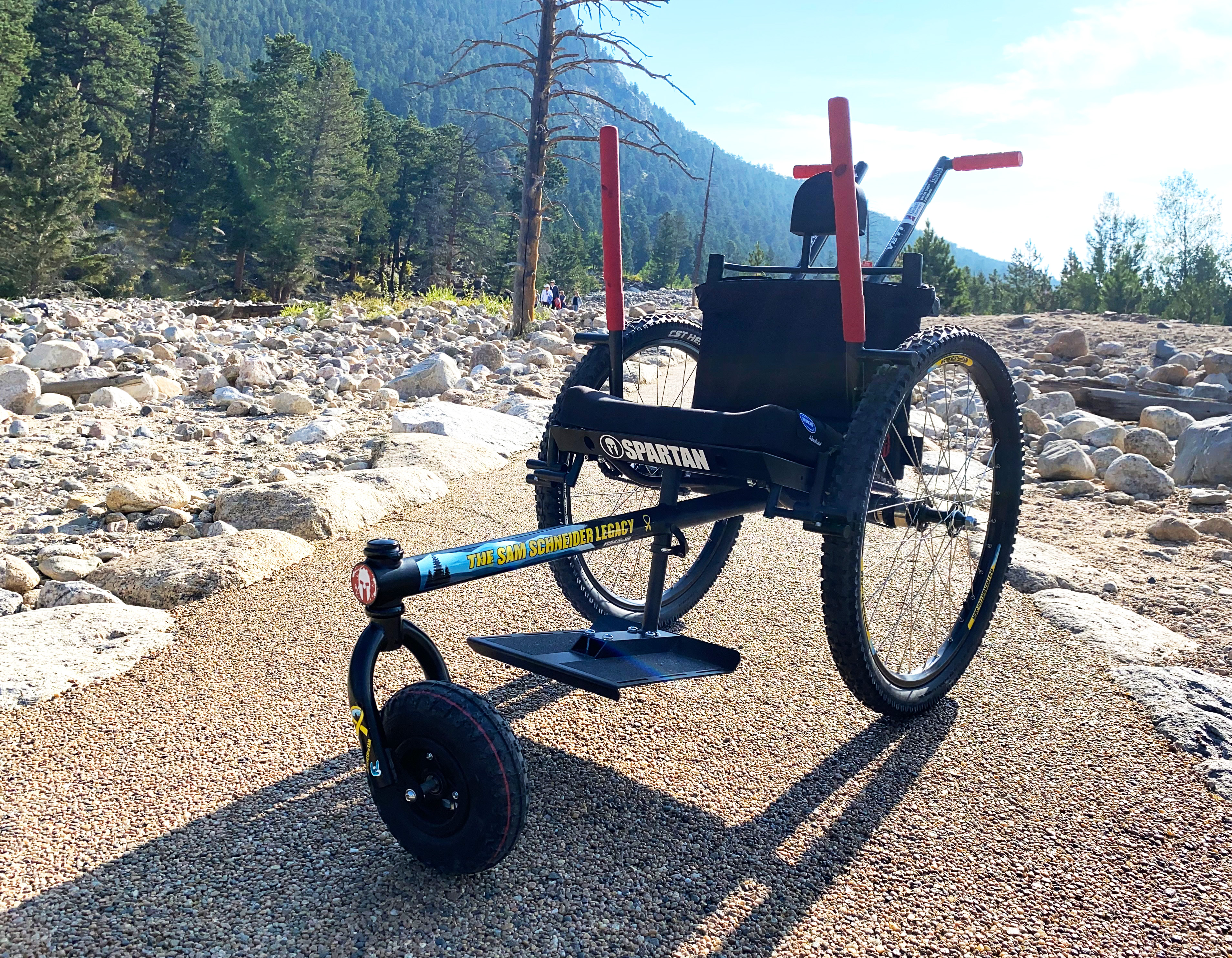
Credit: www.nps.gov
Frequently Asked Questions On Where Can You Not Use A Mobility Scooter
What Are The Rules For A Mobility Scooter?
The rules for a mobility scooter include following these guidelines: 1. Obey traffic laws and regulations to ensure safety. 2. Respect pedestrians and give them the right of way. 3. Stay within designated paths and avoid overcrowding. 4. Always operate the scooter responsibly and be aware of surroundings.
Can I Use A Mobility Scooter If I’M Not Disabled?
No, mobility scooters are specifically designed for individuals with disabilities.
Can You Use A Mobility Scooter In The House?
Yes, you can use a mobility scooter inside your house for easy and convenient movement.
What Are The Disadvantages Of Mobility Scooters?
Mobility scooters have limited range, can be difficult to transport, require maintenance, and may not be suitable for all terrains.
Conclusion
To ensure your safety and the safety of others, it is important to be aware of where you cannot use a mobility scooter. While these devices offer a convenient and efficient means of transportation for individuals with limited mobility, there are certain places where their use is not suitable.
For instance, using a mobility scooter on escalators or stairways is highly dangerous and should be avoided. Similarly, crowded areas such as busy shopping malls or narrow store aisles may pose challenges for maneuvering a scooter safely. It is also important to respect the rules and regulations of public transportation, as some buses and trains may have limitations on accommodating mobility scooters.
Additionally, parks and nature trails with rugged terrain may not be suitable for these devices. By understanding these limitations and using your mobility scooter responsibly, you can enjoy the freedom it provides while ensuring a safe and pleasant experience for yourself and those around you.

